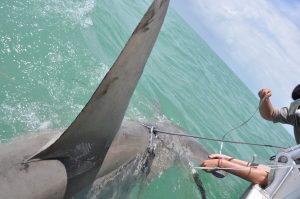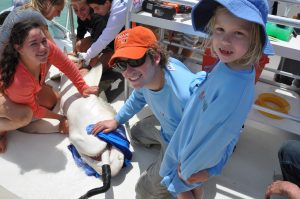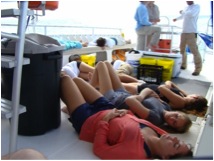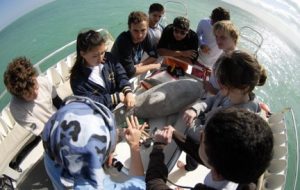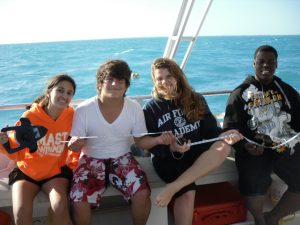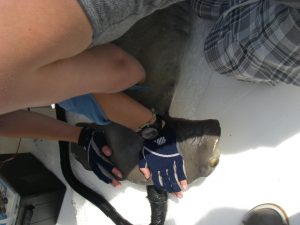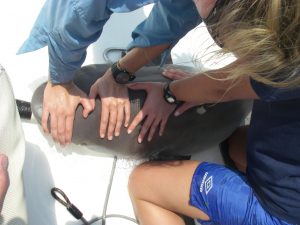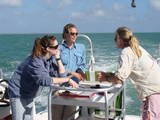April 17th, 2010..a mixed day of sharks and good data.
Saturday, April 17, 2010:
It was nice to wake up in The Keys instead of having to drive that 2-hour stretch from home. That’s probably all that was good about the day, just kidding we did get some sharks, but I think we were all a little spoiled (rightfully!) from Friday. However, we all had an extra little umph! (not just motivated from the BEAU-TI-FUL Hammerhead we caught and satellite tagged the day before), but because the group of high school students coming out with us are participating in a nationwide contest to have President Obama speak at their graduation; and they wanted their activities with us to be part of their video for the contest!

M.A.S.T. Academy chooses the RJ Dunlap Program to be apart of their video contest, to get President Obama to speak at their graduation. (click to enlarge)
As finalists, the video will be posted on the White House web page for public voting. How awesome is that! We were very happy to hear that M.A.S.T. Academy, a school we have been working with for years, was participating in such a prestigious contest. Not to mention the chance for America and the President of the United States to hear about us and what we are doing to protect sharks.
View MAST’s video and vote for MAST online at www.whitehouse.gov/commencement. The voting period will last from Monday, April 26th at 8 am EST to Thursday, April 29th at 11:59 pm EST.
Now back to sharking. Today, we chose a spot outside of protected Park waters to try our luck for the day.
Although we successfully tagged three sharks, we faced various frustrations throughout the day. Our final count for the day was one blacktip, one blacknose (both not over 4.5ft), and three larger nurse sharks.
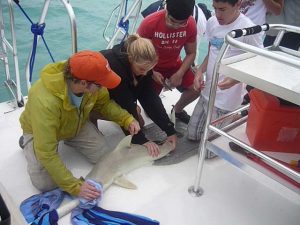
Shark team and students quickly attend to the blacknose shark, tagging and releasing the little guy back into the water. (please click to enlarge)
Two of those nurse sharks however got loose and we were only able to obtain a mere size estimate from both. For us regulars on the boat, we consider this quite a lame turnout. Especially when we find such greater variety and more sizable specimens inside the park waters, it was quite disappointing. At the same time, it is “good” for us to collect this type of data and to observe these occurrences, because they are evidence of the effects of the park’s controls. In fact, it is these results that drive our studies in the first place. The decreasing shark populations in open waters, I think, motivate everyone on our team to participate passionately in this program. It is invaluable to see the trends so that we can hopefully back up our arguments against shark fishing and so that the public can use empirical evidence, not theoretical to see the decline in shark populations. We all LOVE sharks. Their essence is what brings grown men to throw up their hands in fists, against their temples to pray for hammerheads, point their fingers like horns for bull sharks, and growl like tigers for tiger sharks. They bring girls to kiss tuna heads in hopes of making a lucky bait, and fill underneath their nails with fish meat in anxious baiting of the hooks. We all want to see their numbers rebound and a day like today serves us in at least one way: motivation.
Virginia Ana Ansaldi (Shark Program Intern)





